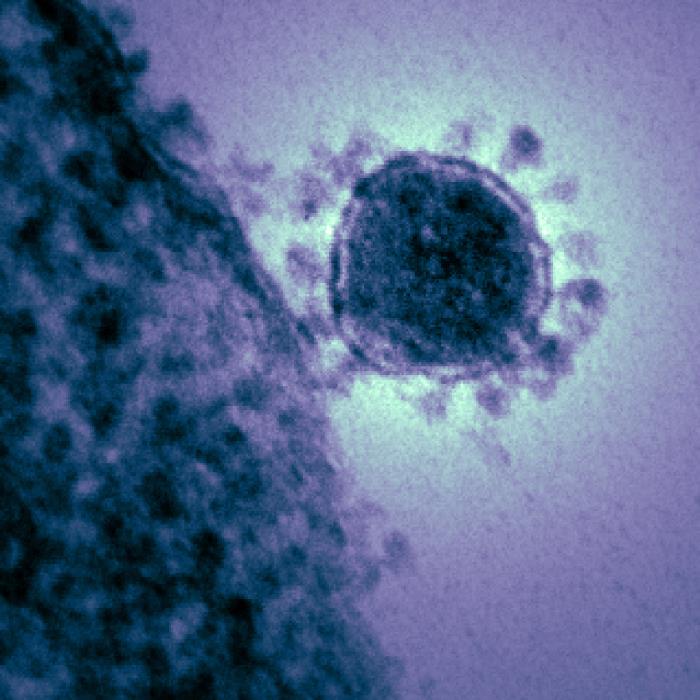Archive for January, 2020
China’s National Health Commission reported a total of 4,515 cases of 2019-nCoV through January 27, including nearly 1,000 severe cases and 106 deaths.
Tuesday, January 28th, 20201/28/1986: The Challenger explosion and the sacrifice of our heroes
Tuesday, January 28th, 20202019 nCoV SitRep
Tuesday, January 28th, 2020From the NYT
Here’s what you need to know:
- Death toll exceeds 100 as number of infections skyrockets.
- Hong Kong puts significant limits on travel from the mainland.
- Shortage of test kits in hot zone prompts concern that cases have been underreported.
- Mystery virus strains China’s already broken health care system.
- World Health Organization buries updated global risk assessment in a footnote.
- C.D.C. urges travelers to avoid nonessential trips to China.
- Worries rise about the outbreak’s economic impact.
MERS: Up close
Monday, January 27th, 2020
Interim case reporting form for 2019 Novel Coronavirus (2019-nCoV) of confirmed and probable cases
Monday, January 27th, 2020
CDC: Wuhan, China
Canada confirmed that their second case, announced this morning, is also recently returned from Wuhan and is a close contact of the first confirmed case.
Monday, January 27th, 2020
Statement from Dr. Eileen de Villa, Medical Officer of Health, Toronto Public Health:
Toronto Public Health reports second presumptive confirmed case of novel coronavirus
Toronto Public Health (TPH) has received notification of Toronto’s second presumptive confirmed case of the novel coronavirus (2019-nCoV). The individual recently travelled to Wuhan and is a close contact of the first presumptive confirmed case of the novel coronavirus (2019-nCoV). Since arriving in Toronto, this individual has been in selfisolation at home, recovering and is currently doing well. This is the appropriate course of action for someone who is ill with respiratory symptoms.
We are not surprised to learn of a further case as we have a very mobile population, with lots of travel back and forth between Canada and China. However, I want to remind residents that at this time the risk to our community remains low. We appreciate that many people have questions, however we continue to ask that people respect these people’s privacy as they recover.
We continue to hear from our local hospital partners that people are presenting to their emergency departments without signs of illness. While we appreciate that people may have concerns, and that people may worry about their health, we encourage people who were on this flight and who do not have signs of illness to continue with their routine activities and we ask that these people do not present to the healthcare system. If you have questions, we encourage you to call public health at 416-338-7600.
Our overall advice remains the same: if you don’t need to be managed in a hospital because of your given medical condition, if you are not sick enough to require hospitalization to recover from a respiratory illness, we recommend staying home with plenty of rest and fluids to let your body recover. This is standard care for this type of illness.
2019-nCoV has been identified at the same time as local circulation of the flu is common in Toronto. As a result, we are also advising residents and staff to take the usual measures to reduce the risk of the transmission of the flu and respiratory illness, which include getting a yearly flu vaccine, washing hands frequently, covering your cough or sneeze and staying home if you are ill.
We appreciate that there are many information sources. We would like to remind residents to go to credible sources when seeking information about this rapidly evolving situation. We will continue to keep residents informed as new information is confirmed.
Year of the Nurse and the Midwife 2020
Monday, January 27th, 2020Nurses and midwives play a vital role in providing health services. These are the people who devote their lives to caring for mothers and children; giving lifesaving immunizations and health advice; looking after older people and generally meeting everyday essential health needs. They are often, the first and only point of care in their communities. The world needs 9 million more nurses and midwives if it is to achieve universal health coverage by 2030.
That’s why the World Health Assembly has designated 2020 the International Year of the Nurse and the Midwife.
Join WHO and partners including, the International Confederation of Midwives (ICM), International Council of Nurses (ICN), Nursing Now and the United Nations Population Fund (UNFPA) in a year-long effort to celebrate the work of nurses and midwives, highlight the challenging conditions they often face, and advocate for increased investments in the nursing and midwifery workforce.
Facts and figures

Nurses and midwives provide a broad range of essential health services close to the community and in all levels of health facility.

The world needs 18 million more health workers to achieve and sustain universal health coverage by 2030. Approximately half of that shortfall – 9 million health workers – are nurses and midwives.

Globally, 70% of the health and social workforce are women. Nurses and midwives represent a large portion of this.

Midwifery, where care includes proven interventions for maternal and newborn health as well as for family planning could avert over 80% of all maternal deaths, stillbirths and neonatal deaths.

FDA–approved and off-label recommendations for licensed tetanus toxoid, reduced diphtheria toxoid, and acellular pertussis (Tdap) products — United States, 2019
Friday, January 24th, 2020Havers FP, Moro PL, Hunter P, Hariri S, Bernstein H. Use of Tetanus Toxoid, Reduced Diphtheria Toxoid, and Acellular Pertussis Vaccines: Updated Recommendations of the Advisory Committee on Immunization Practices — United States, 2019. MMWR Morb Mortal Wkly Rep 2020;69:77–83. DOI: http://dx.doi.org/10.15585/mmwr.mm6903a5external icon
Abbreviations: DTaP = diphtheria and tetanus toxoids and acellular pertussis vaccine; Td = tetanus and reduced diphtheria toxoid.
* Persons with incomplete or unknown vaccination history should receive a single dose of Tdap, preferably as the first dose of the 3-dose catch-up series; if additional tetanus toxoid–containing doses are needed, either Td or Tdap vaccine may be used.
† Both Tdap vaccines may be administered during pregnancy with the same intervals and restrictions (vaccine specific) as would apply to a nonpregnant person.
§ Package inserts for indications and intervals for wound management are available at https://www.fda.gov/media/119862/downloadexternal icon (Adacel) and https://www.fda.gov/media/124002/downloadexternal icon (Boostrix).
On January 24, 2011, a bomb explodes in the international arrivals hall of Moscow’s Domodedovo International Airport, killing 35 people and injuring 173 others.
Friday, January 24th, 2020Take-aways from Event 201
Friday, January 24th, 2020
|
|

